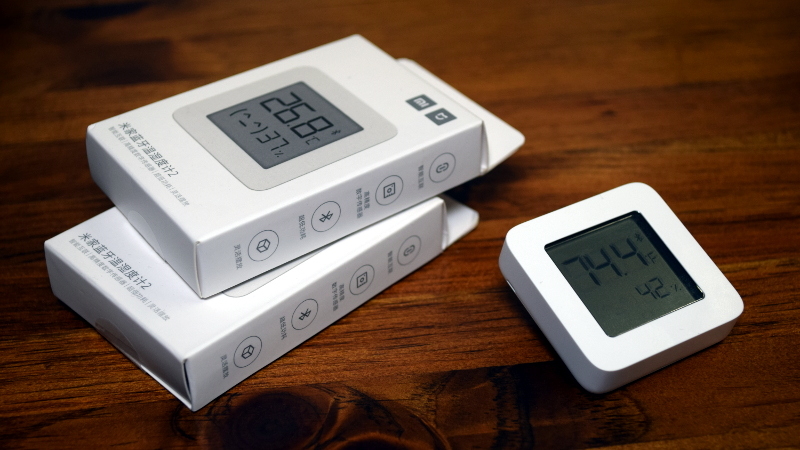Even the most experienced hardware hacker would have trouble building something like the Xiaomi LYWSD03MMC. For as little as $4 USD each, you’ve got a slick energy efficient sensor with an integrated LCD that broadcasts the current temperature and humidity over Bluetooth Low Energy.
It’s pretty much the ideal platform for setting up a whole-house environmental monitoring system except for one detail: it’s designed to work as part of Xiaomi’s home automation system, and not necessarily the hacked-together setups that folks like us have going on at home. But that was before Aaron Christophel got on the case.
We first brought news of his ambitious project to create an open source firmware for these low-cost sensors last month, and unsurprisingly it generated quite a bit of interest. After all, folks taking existing pieces of hardware, making them better, and sharing how they did it with the world is a core tenet of this community.
…
Certainly one of the most appealing aspects of Aaron’s “ATC” firmware is how easy it is to install. You’d expect something like this would require cracking the case and attaching a USB to UART adapter, and while you actually can go that route if you need to, 99% of users will be using the extremely clever “Web Bluetooth” flashing tool.
As smart thermometers came up, I thought this worth flagging up - I have a bunch of these and haven’t got around to flashing them but I will get around to it at some point.
FWIW, I’ve found that my phone has the most reliable BLE radio+drivers for flashing these; I’ve had some luck on windows and Linux but chrome on Android has ended up being my go-to for flashing these.
Edit: which I’m now noticing was pretty much said in the article; take this as an endorsement for that advice.
A second opinion on the best method is always handy - it struck me as the step that could cause the most frustration.



